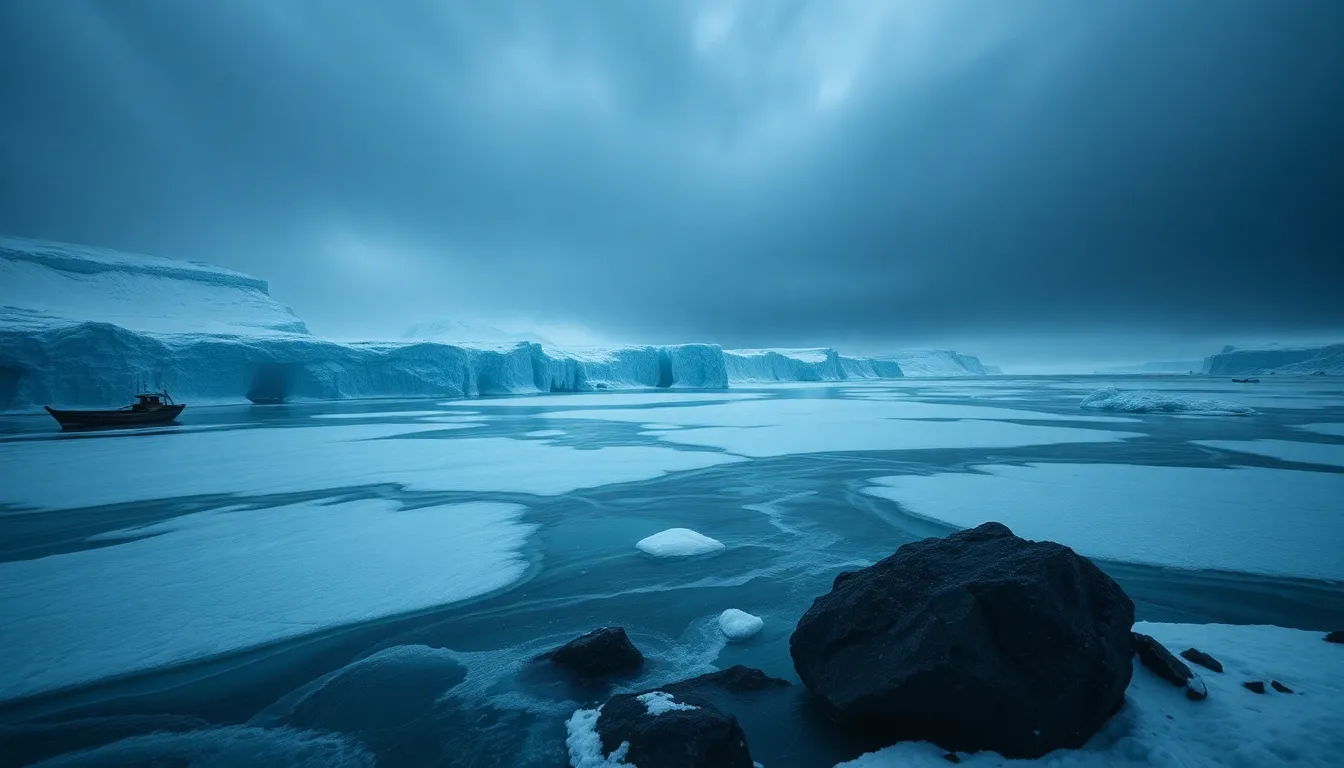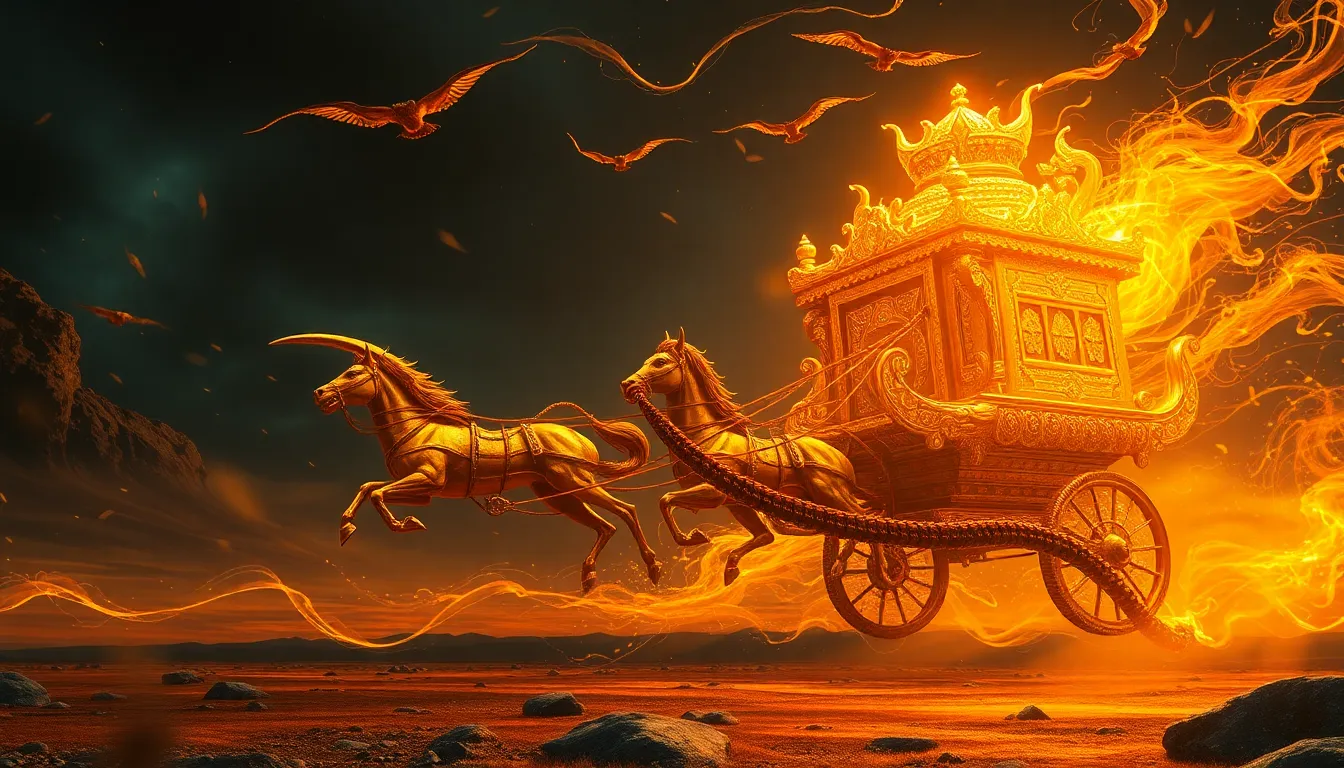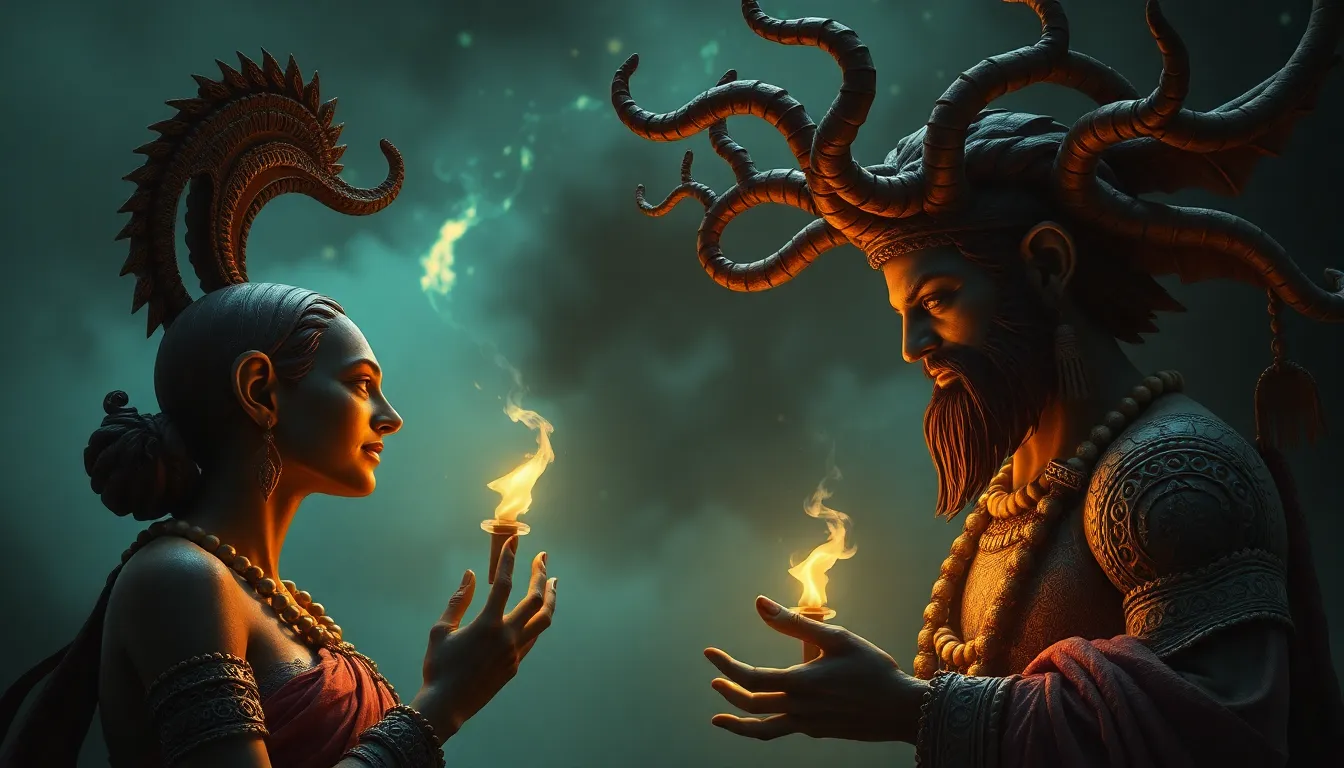The Mythical Floods of the Arctic: Tales from the Frozen North
Introduction to Arctic Mythology
The Arctic, a region characterized by its icy landscapes and extreme weather, is not only a geographical entity but also a cultural one. The communities that inhabit this frigid land have a rich tradition of storytelling that serves to educate, entertain, and preserve their cultural heritage. In the Arctic, tales of mythical floods are particularly significant, often symbolizing profound transformations in both the natural world and human experience.
Storytelling has been a vital aspect of Arctic life, offering a way to convey wisdom and teach survival skills. Among these narratives are accounts of floods that rise from the depths of the collective imagination, echoing the realities of life in a land where water plays a crucial role. These myths often reflect the fears and hopes of the people who tell them, weaving together themes of destruction, rebirth, and resilience.
Historical Context of Flood Myths
Flood myths are found across many ancient civilizations, from the biblical account of Noah’s Ark to the Mesopotamian Epic of Gilgamesh. Each narrative shares common threads, often detailing a great deluge that serves to cleanse the earth or reset the balance of nature. The Arctic region, though remote, has its own unique flood narratives that resonate with these global themes.
In examining these myths, it becomes clear that water holds a dual significance in Arctic cultures. On one hand, it is a source of life and sustenance; on the other, it can bring devastation. This duality mirrors the harsh realities faced by Arctic communities, where survival depends on understanding and respecting the elements.
Regional Variations of Flood Myths in the Arctic
Different Indigenous groups within the Arctic Circle have their own distinct flood stories, each offering unique interpretations of water’s role in their lives. Here are a few notable examples:
- Inuit Flood Stories: Inuit tales often recount the transformative power of water, depicting floods as events that reshape the land and the lives of its inhabitants. These stories may include beings like the sea goddess Sedna, whose actions can lead to both bountiful hunts and catastrophic floods.
- Sámi Tales: The Sámi people, indigenous to the northern regions of Norway, Sweden, Finland, and Russia, tell stories of rising waters that threaten their way of life. These narratives often serve as cautionary tales about the consequences of human actions on the environment.
- Other Indigenous Narratives: Other tribes and groups within the Arctic Circle also contribute to the rich tapestry of flood myths, each emphasizing the relationship between water, land, and community.
Symbolism and Themes in the Myths
Water in Arctic flood myths often symbolizes both destruction and rebirth. The floods can be seen as a cleansing force, washing away the old to make way for the new. This duality is particularly poignant in the context of climate change, as the rising waters of the present day echo the mythical floods of the past.
The themes of nourishment and devastation are intertwined, reflecting the complex relationship that Arctic peoples have with their environment. As climate change alters landscapes and weather patterns, these ancient stories gain renewed significance, offering insight into adaptation and survival in a shifting world.
The Role of Animals in Flood Narratives
Animals often play pivotal roles in Arctic flood myths, serving as both symbols and protagonists. Many stories illustrate how animals respond to rising waters, showcasing their instincts and behaviors during crises. Key animal figures include:
- The Raven: Often depicted as a trickster, the raven appears in many flood narratives, using its cunning to navigate the challenges posed by rising waters.
- The Bear: Symbolizing strength and resilience, the bear’s behavior during floods may mirror the human struggle for survival.
- Sea Creatures: Various marine animals, such as seals and whales, are often portrayed as guides or helpers, emphasizing the interconnectedness of life in the Arctic.
These stories not only entertain but also impart lessons on the importance of respecting nature and understanding the behaviors of animals in times of crisis.
Archaeological Evidence and Scientific Perspectives
Archaeological findings in the Arctic have provided insights into ancient floods and their impacts on human settlements. Researchers have discovered evidence of significant climate events that likely inspired these myths, including glacial melt and rising sea levels.
Scientific studies have revealed patterns of environmental change that align with the narratives found in Indigenous cultures. This intersection of myth and geological history underscores the importance of oral traditions in preserving knowledge about the natural world.
Modern Interpretations and Cultural Relevance
Contemporary Arctic communities continue to engage with these ancient myths, often reinterpreting them in light of modern challenges, particularly climate change. Many artists, writers, and cultural leaders are working to retell these stories, highlighting their relevance in today’s context.
As climate issues grow more pressing, traditional tales of floods offer a framework for understanding and coping with the changes that are occurring. The arts play a crucial role in this process, helping to keep these narratives alive and relevant.
The Influence of Globalization on Arctic Myths
Globalization has led to the spread of Arctic flood myths beyond their original cultures, influencing storytelling practices worldwide. The advent of technology and media has transformed how these narratives are shared, allowing for wider dissemination but also raising concerns about cultural appropriation.
Despite these challenges, efforts are being made to preserve Indigenous narratives. Community initiatives and cultural programs aim to safeguard these stories, ensuring they are honored and respected in a rapidly changing world.
The Future of Mythical Flood Narratives
As the Arctic continues to experience significant environmental changes, new myths may emerge, reflecting the ongoing struggles and adaptations of its peoples. The importance of storytelling will remain central to resilience, providing a means for communities to process their experiences and envision their futures.
With climate change altering landscapes and lives, the narratives of the past can inform the creation of new stories that resonate with contemporary realities, fostering a deeper understanding of the human experience in the face of adversity.
Conclusion: Bridging Past and Present
The enduring power of myth serves as a vital tool for understanding the human experience, especially in the context of the Arctic’s rich cultural heritage. The flood tales of the region offer profound insights into the relationship between people and their environment, underscoring the relevance of these stories in contemporary discussions about climate and culture.
As we reflect on the significance of these narratives, it is crucial to honor and preserve Indigenous stories, ensuring they continue to inspire future generations. The mythical floods of the Arctic not only connect us to the past but also guide us toward a more sustainable and respectful future.




